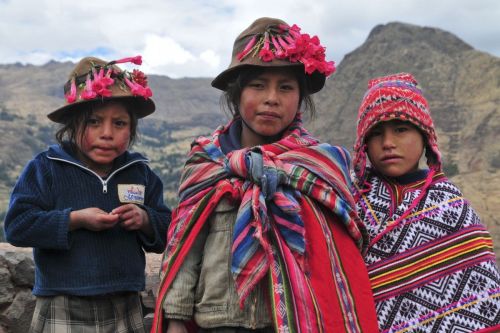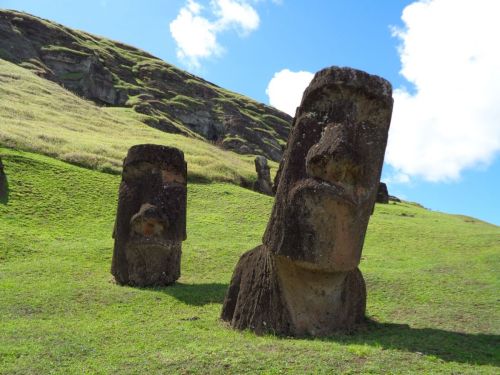The Atacama Desert in Chile is a vast expanse with a Martian landscape. It is the driest non-polar desert in the world and the second driest overall, as well as the only truly hot desert and the largest fog desert in the world.
Because of its similarity to Mars, it is an experimental site for simulating expeditions to that planet. It is also an excellent place for astronomers and scientists to learn about the universe thanks to the huge telescopes installed in the desert.
It is also a tourist attraction, if only for its unique geyser field.
t is located in the northern part of Chile, between the Coastal Cordillera (a coastal chain of the Andes in Chile) and the Western Cordillera (a mountain range in western Colombia, part of the Andes).
This means that there are special climatic conditions there. Such deserts are formed where the coasts of the continent are washed by a cold ocean current, under the influence of which fogs form over the desert. They are the only provider of moisture in this area, as rainfall there is sporadic.
In addition to the Atacama Desert, the Namib Desert, located mainly in Namibia in southwestern Africa on the Atlantic coast, is another fog desert.
The Atacama is the largest fog desert in the world.
The width of the desert is 100 kilometers. It is a gradually rising plain on the Pacific coast with an elevation of 4,900 meters above sea level (the average elevation is 2,240 meters above sea level). It is compared to a giant raised terrace.
The central part of the desert (the Central Valley or Intermediate Depression) forms a series of endorheic basins (an outflowless lake where water inflow is balanced by evaporation).
The desert is widely known as the driest place on earth, especially around the abandoned mining town of Yungay (where the University of Antofagasta's Desert Research Station is located).
The average rainfall in the Atacama is about 15 mm per year, although in some places 1 to 3 mm has been measured. There are also areas where no precipitation has been recorded. Existing evidence suggests that the Atacama may have remained without significant rainfall from 1570 to 1971.
It is thought that the Atacama may be the oldest desert on Earth and has been hypersaline since at least the middle Miocene, although there have been periods of increased moisture. In some parts of the Atacama, dry conditions have prevailed since the Triassic, 200 million years ago.
Most of the desert consists of rocky terrain, salt lakes, sand and lava flows toward the Andes.
Indigenous peoples from the Andes settled in the oases: Atacameño, Aymara, Diaguitas and Chinchorros (known especially for their mummified children buried more than 7,000 years ago). In the 15th century, the area became part of the Inca Empire.
After the fall of the Incas, the desert came under Spanish rule. In the 19th century, the desert came under the control of Bolivia, Chile and Peru. With the discovery of sodium nitrate deposits, the area became a conflict zone and led to the War of the Pacific (Spanish: Guerra del Pacífico). Subsequently, Chile annexed most of the desert, and cities along the coast developed into international ports.
Puquios (spring, well) are ancient underground aqueduct systems that allow water to be transported long distances in hot, dry climates without much of the water being lost to evaporation. They are known locally as socavones (shafts) and were scattered throughout the oases of the Atacama.
In the 21st century, puquios still exist in the valleys of Azapa and Sibaya, as well as in the oases of La Calera and Pica.
A border dispute over these resources between Bolivia and Chile led to the War of the Pacific. Saltpeter was mined on a large scale until the early 1940s. Today there are about 170 abandoned nitrate mining towns in the desert, almost all of which were closed after the invention of synthetic nitrate in Germany in the first decade of the 20th century.
In addition, the desert has rich deposits of copper, gold, silver and iron, as well as boron, lithium, sodium nitrate and potassium salts. Bishofite (a hydrous magnesium chloride mineral) is mined in the Salar de Atacama.
It is an area with high altitude, almost no cloud cover, dry air, and no light pollution or radio interference. There are more than 200 cloudless nights each year, making it possible to view the sky through a telescope.
In October 2011, a radio astronomy telescope called the Atacama Large Millimeter Array, built by European countries, Japan, the United States, Canada and Chile, was installed there at the Llano de Chajnantor Observatory. Since 1999, several radio astronomy projects have been underway in the Chajnantor region, and in 2010 it was decided to build the Extremely Large Telescope on Cerro Armazones mountain. Its launch (first light) is scheduled for 2027.
The Atacama Desert and the McMurdo Dry Valleys (a snow-free valley in Antarctica, one of the driest places on Earth, where it has not rained in nearly two million years) have been used on Earth as testing grounds to simulate expeditions to Mars.
Because of its eerie nature, the Atacama has been used as a filming location for Martian scenes, including in the TV series Space Odyssey: Voyage to the Planets.
This region, unique on Earth in this respect, is being used by NASA to test equipment for future Mars missions. In 2014, another site was found that is drier than Yungay, - Maria Elena in Chile which is more like Mars.
Most of the cities are located on the Pacific coast. Oases in the desert and some valleys, however, have been inhabited for thousands of years and were home to the most advanced pre-Columbian societies.
At that time, much of the plain, known as the Pampa del Tamarugal, was forested, but the demand for firewood associated with silver and saltpeter mining in the 18th and 19th centuries resulted in widespread deforestation.
There are more than 500 species of plants, characterized by their remarkable adaptability to the extreme environment.
Desert wasps and butterflies can be found in the hills. There are only a few species of reptiles and amphibians: the Vallenar toad (Rhinella atacamensis), iguanas, lava lizards. One species, the Fabian's lizard (Liolaemus fabiani), is endemic to the Salar de Atacama - the largest salt lake in Chile.
Humboldt penguins live along the coast and nest on the cliffs. Inland, at higher elevations, the salt flats are inhabited by Andean flamingos. Chilean flamingos can be found along the coast. From time to time, hummingbirds and rusty sparrows appear there.
Due to the extreme conditions, only the Darwin's leaf-eared mouse, the South American gray fox and the viscacha (a relative of the chinchilla) live there. Larger mammals such as vicuñas and guanacos are found only in grassy areas.
Along the coast, South American fur seals and sea lions often congregate.
Various championships are held there, such as the Atacama Rally, the Chile Rally, the Patagonia-Atacama Rally and recent editions of the Dakar Rally. The dunes of the desert are used by sandboarding enthusiasts. During a week-long walk, the Atacama Crossing, competitors traverse the desert.
Near the Lascar volcano in the Atacama, there is an event called the Volcano Marathon.
A special ESO hotel is reserved for astronomers and scientists.
El Tatio is a geothermal field with many geysers, located at an altitude of 4,320 meters above sea level. It is the third largest geyser field in the world and the largest in the Southern Hemisphere, with about 8% of all the geysers in the world. Only the fields in Yellowstone in the US and the Geyser Valley in Kamchatka are larger.
It is a major tourist destination in northern Chile.












